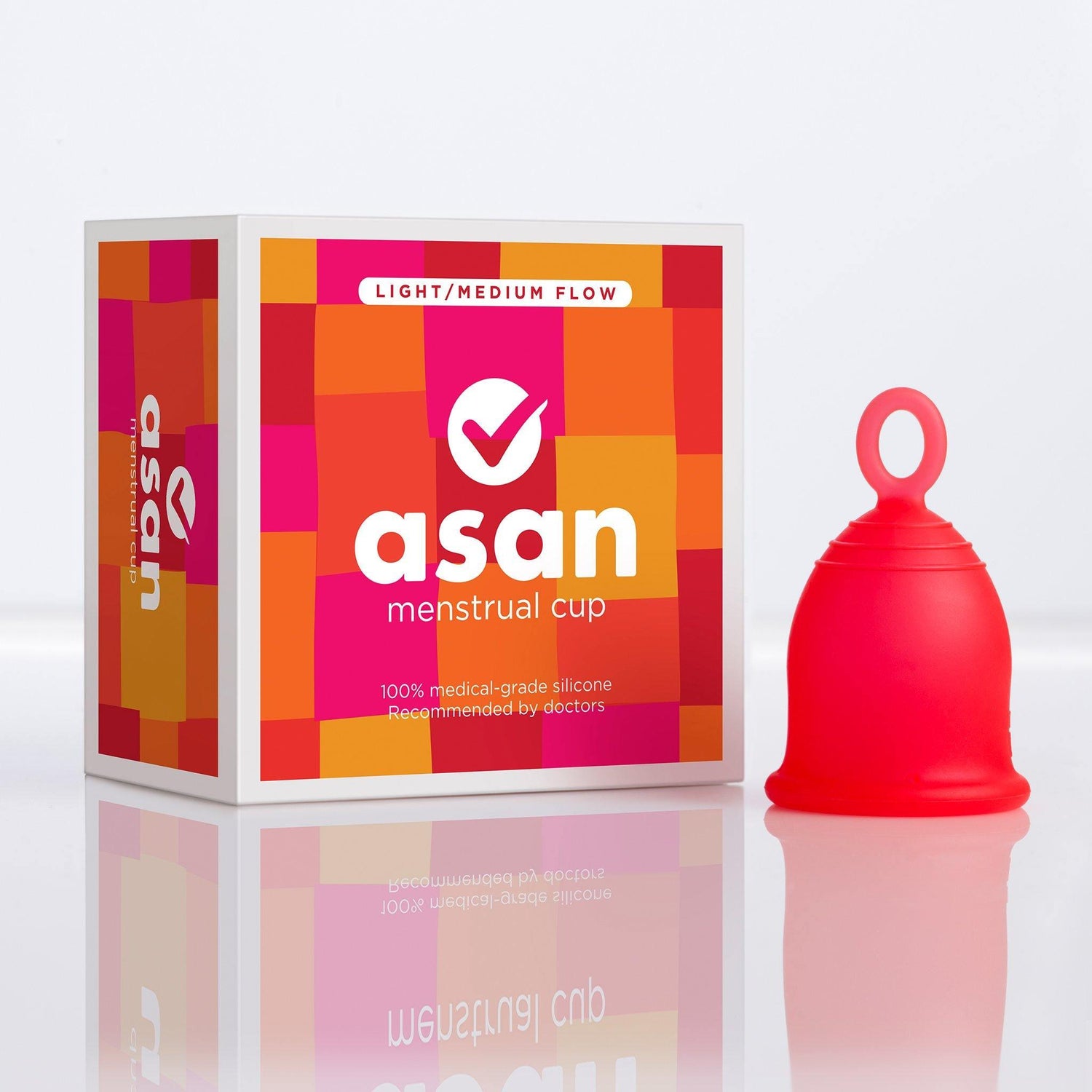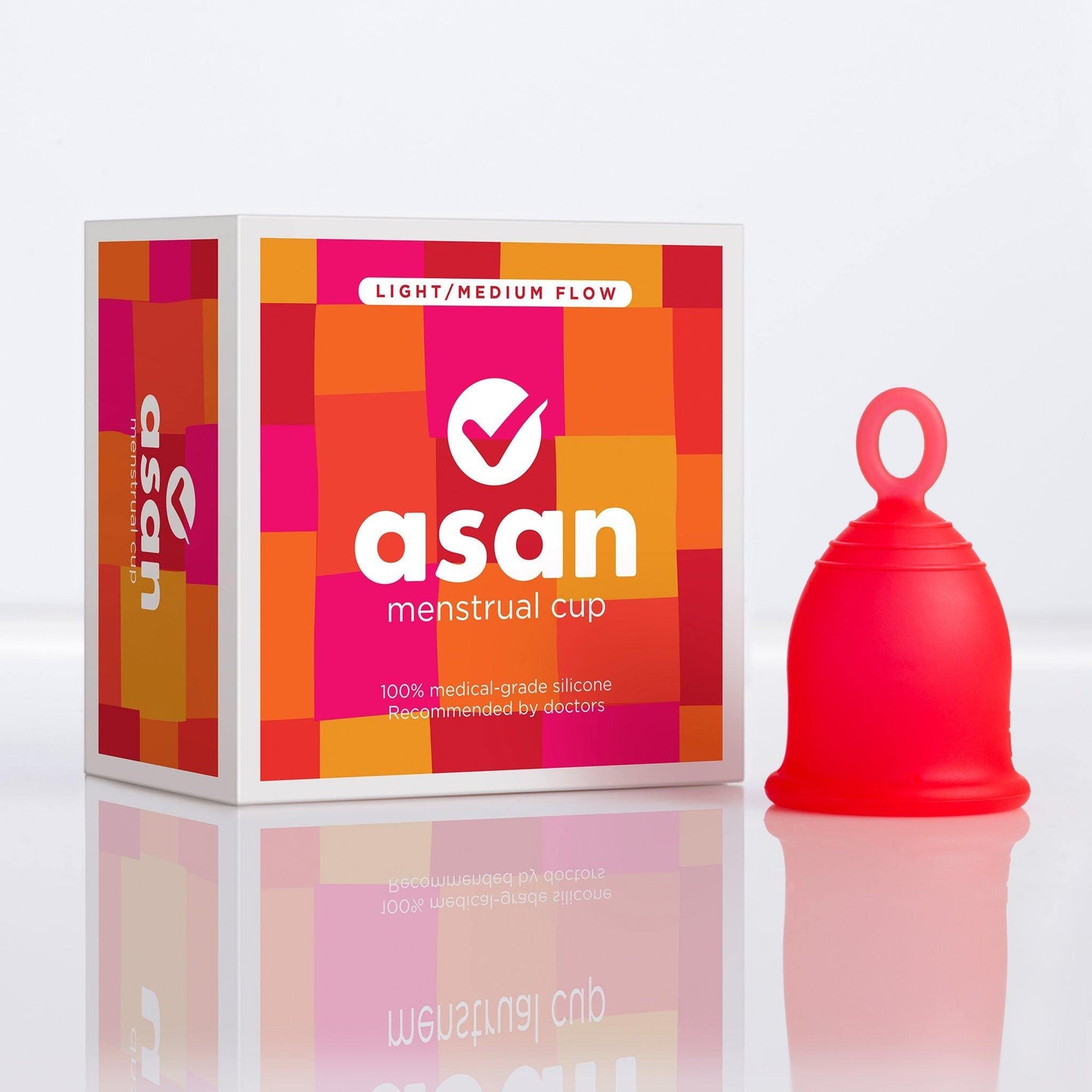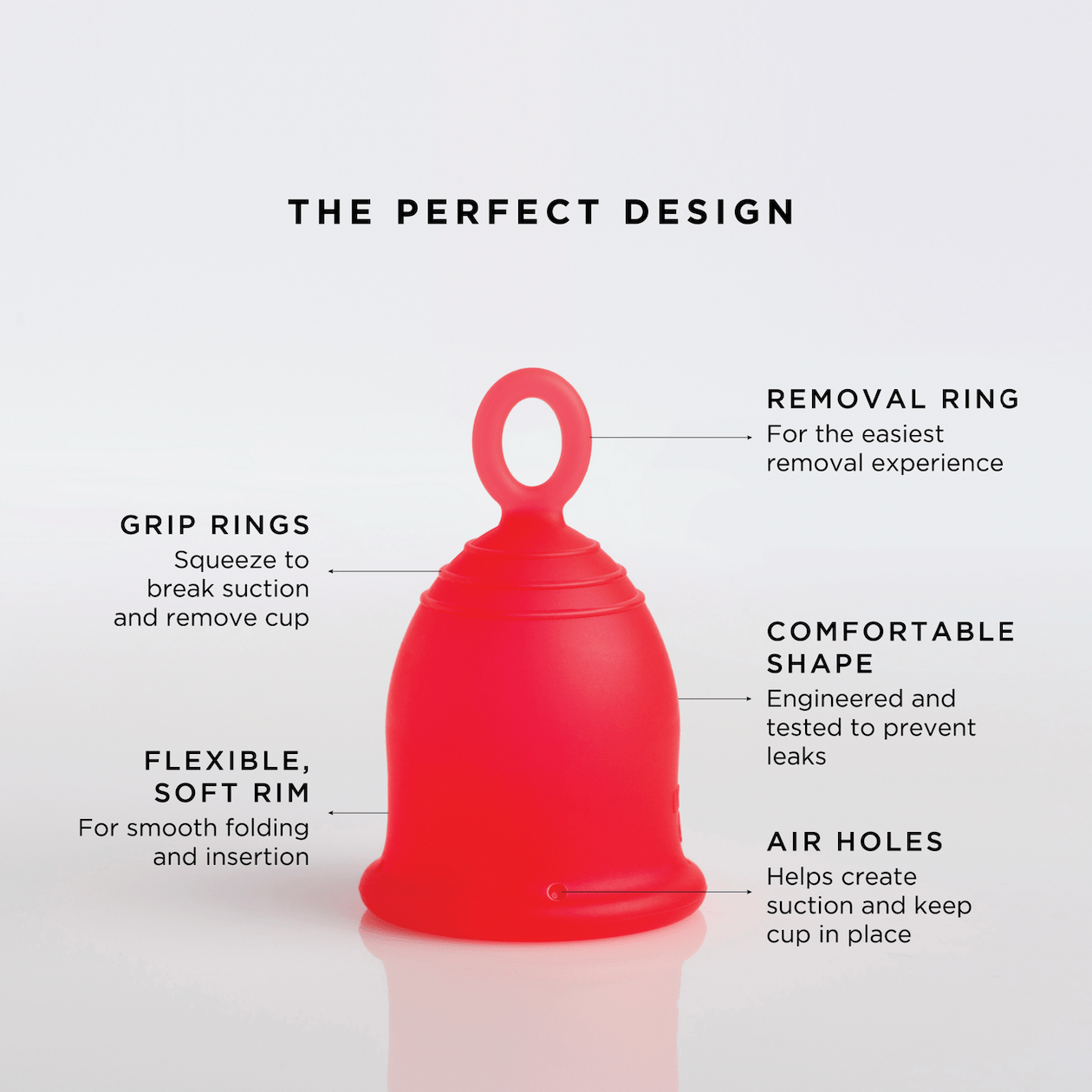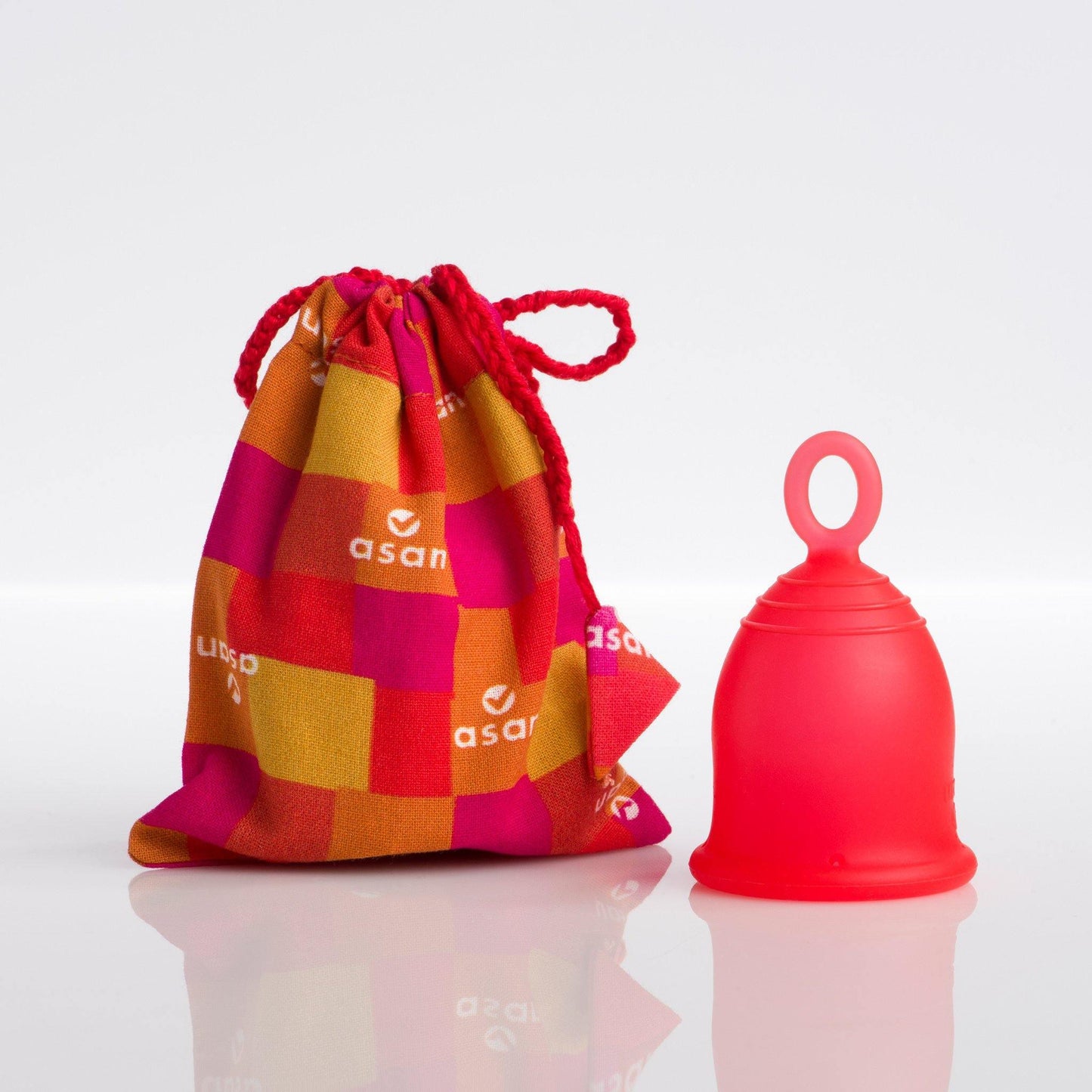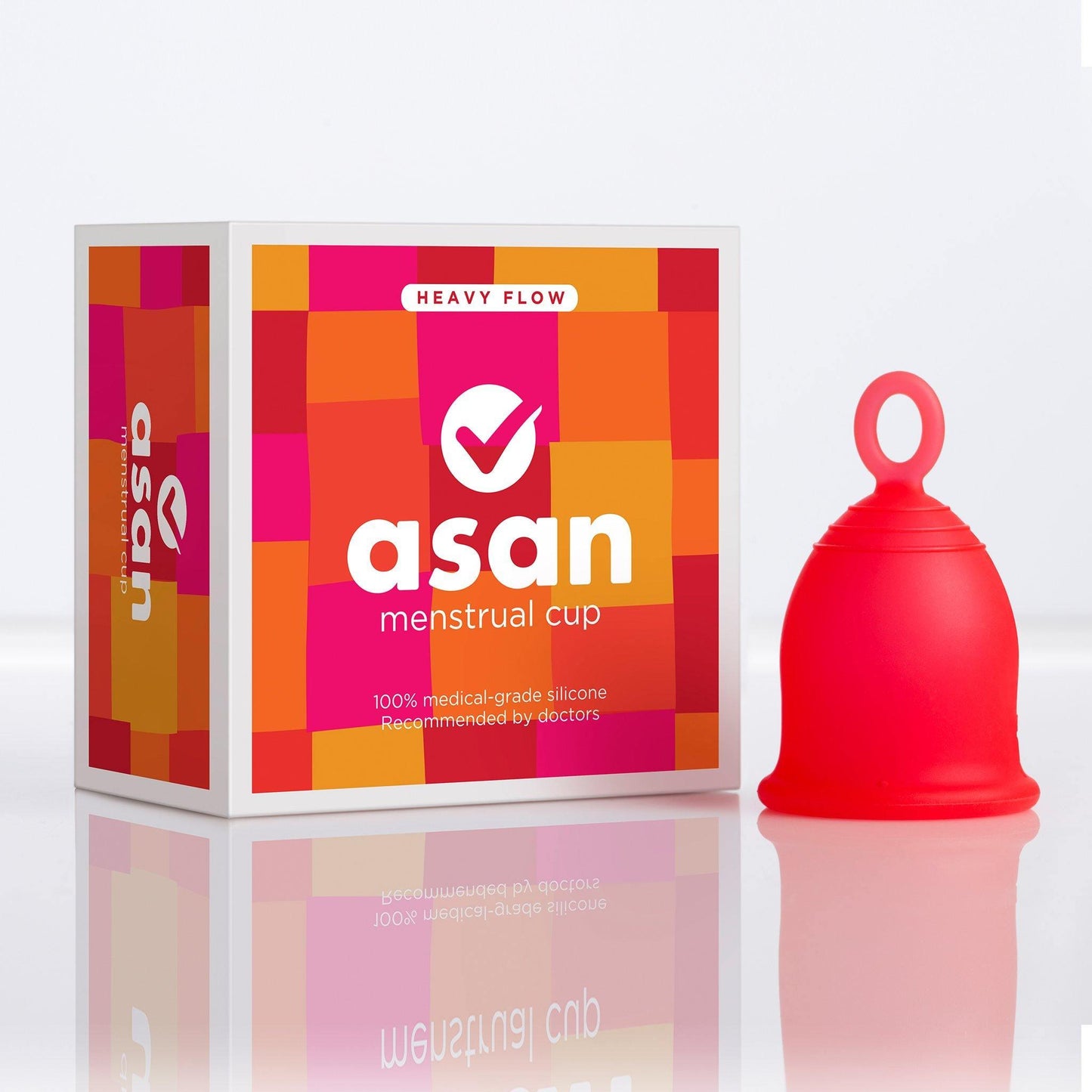In this blog, Asan team member Mamta Kandari shares her experience with endometriosis and how switching to an eco-friendly menstrual cup helped ease some of her struggle.

how it all began
My earliest memory of having periods is all about pain. Severe, debilitating pain in my lower abdomen. I remember how I used to skip school for two days in a row because of this pain – and I continued to do this in college. I was so dependent on my family for those four days a month.
I went from doctor to doctor and was told – “periods are like this. The pain will go away eventually”. As I entered my twenties, I began to find myself feeling extremely alone in the world. No matter how much your friends support you – your pain is yours alone. No one else can feel it. When friends went out, I would stay in bed, struggling with the inflammation and pain that came every menstrual period. And when I complained, I was told that the pain was in my head – that my body had a low tolerance for pain. I dreaded my period every single day for 10 years.
And then the day came when I literally couldn’t get out of bed. I feel haunted by the pain of that time. I was rushed to the hospital and had undergo a range of scans, which were not able to trace my ovaries, part of my liver and other organ. I had adhesive cysts covering almost every organ in my lower abdomen and was advised to have an immediate surgery. It was only at this point that I was diagnosed with Grade 4 endometriosis.
what exactly is endometriosis?
To understand endometriosis, we first need to learn about the endometrium, which is the lining of the uterus. Every menstrual cycle, your endometrium grows in preparation to host an embryo. If you don’t get pregnant, your endometrium sheds, releasing tissues and blood into the vagina – this is the menstrual period.
Now coming to endometriosis (otherwise known as endo) – this is a painful disorder in which every menstrual cycle, there is a build-up of tissues not only in your endometrium, but also outside your uterus. The lining that is meant to grow inside the uterus starts abnormally growing around other organs, such as the ovaries, fallopian tubes, bowel, rectum and bladder. These growths can begin to clump and bind together, in what are known as adhesions.
Endo is a chronic illness that impacts something like 1 in 10 people and it can’t be completely cured – only managed. In addition to physical pain, endo can contribute to anxiety and depression, as it leaves patients feeling hopeless about their situation. Treatments for endo involve taking oral contraceptives to control the growth of endometrial tissue and excision surgery to remove the excess tissue that builds up in different parts of the body.
As I had Grade 4 endometriosis with several adhesions (by the point I was diagnosed, I had a buildup of tissue not only around my ovaries and fallopian tube but also my intestines and rectum) I was recommended for an excision surgery to remove these growths.
life after endometriosis surgery
What I didn’t realise was that surgery was just the start to living with endo. Since then, my life has become about getting to know my condition better and trying to find the right medications and treatments to manage my symptoms. Sometimes these treatments work, and sometimes they don’t go anywhere. The truth is that there hasn’t been conclusive research about why endometriosis happens and how it can be cured.
Through experimenting with different treatments and lifestyle changes, I’ve found a few things that have truly helped improved my endo symptoms. While the disease will never go away, these changes have certainly made me feel healthier and have given me some relief. While everyone’s body is different, and what worked for me might not work for you, I would like to share my experiences in the hope that someone benefits.
Here are my top three tips for managing life with endo:
- Be mindful of the food you eat
- Try and maintain an active lifestyle
- Switch to a menstrual cup
changing your diet with endometriosis
I have severe digestive issues and had no idea how closely linked these were with my endo. While working on my diet with a naturopath, I realised how food had a direct effect on my physical discomfort and endometriosis symptoms. I switched to a plant-based diet and also eating two meals a day and instantly felt light and better. I stopped complaining of constant stomach aches.
While I’m not advocating a plant-based or any other specific diet, my suggestion is to be open to changing your diet and find what works for your body. Simple experimentation can teach you a lot and improve your daily pain – for example, I’ve learned that apples lead me to feel bloated while green vegetables make me feel light and energetic. With this knowledge I try to eat mindfully and it certainly has helped reduce my endo-related pain.
being active with endometriosis
 One of the major symptoms of endo is extreme fatigue. Doing basic things like waking up in a morning can be a struggle. But no matter how impossible it seems, I promise you that finding some way to move your body and be active can make a huge difference. Like with food, there is no one size fits all – try yoga, a sport, dance or even going for a walk. The key word is ‘try’ – if you can’t exercise on any given day (and this happens to me a lot) that is totally fine.
One of the major symptoms of endo is extreme fatigue. Doing basic things like waking up in a morning can be a struggle. But no matter how impossible it seems, I promise you that finding some way to move your body and be active can make a huge difference. Like with food, there is no one size fits all – try yoga, a sport, dance or even going for a walk. The key word is ‘try’ – if you can’t exercise on any given day (and this happens to me a lot) that is totally fine.
I love walking and try and take time out to do it every day. I can’t really do anything more physically exerting than this, but a small walk or a stretch makes my body feel rejuvenated and also provides me with a mental break from my everyday activities. While it may not always relieve my physical symptoms, walking does relieve the anxiety and mental distress when I feel hopeless about my endo pain.
using a menstrual cup with endometriosis
After my endo diagnosis, I began to research everything – my diet, my lifestyle and even the period products I use. I read an article that said that the chemicals present in commercial sanitary pads and tampons can cause a range of issues from endometriosis to PCOS. Whether this is true or not, commercial pads were giving me terrible rashes. I come from the mountains and hated the waste I was generating in my local environment. So I looked into better and healthier options, which is when I first learned about cloth pads and menstrual cups!
Both cloth pads and menstrual cups are chemical free, which is what makes them so awesome. Having looked into both options, I chose to try a menstrual cup – and the change from pads was incredible. I couldn’t believe that all I needed was this one tiny cup for my entire cycle. Zero stress of disposing and washing.
When you have endo, there are days that you can’t get out of your bed, and the pain of dragging yourself to the loo to check for leaks or change pads is truly a mammoth task. Using a menstrual cup gave me incredible freedom as I can wear it for a full 12 hours. Furthermore, with my menstrual cup I was able to understand my menstrual flow and how much I bleed, which helped me understand my body a lot better.
Last year I was introduced to the Asan cup – and this was an incredible upgrade from my existing cup. The material is such high quality (you’ll feel it) and the ring makes is so simple to remove it. And I genuinely feel despite all the period pain and hassle, my experience with periods when using the Asan cup is effortless and blissful (which means a LOT for someone with endometriosis!)

While I would strongly recommend the Asan as the best period product for anyone with endometriosis, I would also encourage you to check with your gynaecologist before making the switch to cups. No two bodies are the same and it’s important that you get the correct advice for yourself your stage of endo.
As hard as it is to seek help, please do, because this matters. All of ‘you’ matters!
